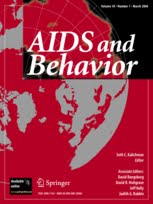Posted on June 03, 2016
Source: AIDS and Behavior

Economic Resources and HIV Preventive Behaviors Among School-Enrolled Young Women in Rural South Africa (HPTN 068)
Larissa Jennings, Audrey Pettifor, Erica Hamilton, Tiarney D. Ritchwood, F. Xavier Gómez-Olivé, Catherine MacPhail, James Hughes, Amanda Selin, Kathleen Kahn, The HPTN 068 Study Team
Individual economic resources may have greater influence on school-enrolled young women’s sexual decision-making than household wealth measures. However, few studies have investigated the effects of personal income, employment, and other financial assets on young women’s sexual behaviors. Using baseline data from the HIV Prevention Trials Network (HPTN) 068 study, we examined the association of ever having sex and adopting sexually-protective practices with individual-level economic resources among school-enrolled women, aged 13–20 years (n = 2533). Age-adjusted results showed that among all women employment was associated with ever having sex (OR 1.56, 95 % CI 1.28–1.90). Among sexually-experienced women, paid work was associated with changes in partner selection practices (OR 2.38, 95 % CI 1.58–3.58) and periodic sexual abstinence to avoid HIV (OR 1.71, 95 % CI 1.07–2.75). Having money to spend on oneself was associated with reducing the number of sexual partners (OR 1.94, 95 % CI 1.08–3.46), discussing HIV testing (OR 2.15, 95 % CI 1.13–4.06), and discussing condom use (OR 1.99, 95 % CI 1.04–3.80). Having a bank account was associated with condom use (OR 1.49, 95 % CI 1.01–2.19). Economic hardship was positively associated with ever having sex, but not with sexually-protective behaviors. Maximizing women’s individual economic resources may complement future prevention initiatives.